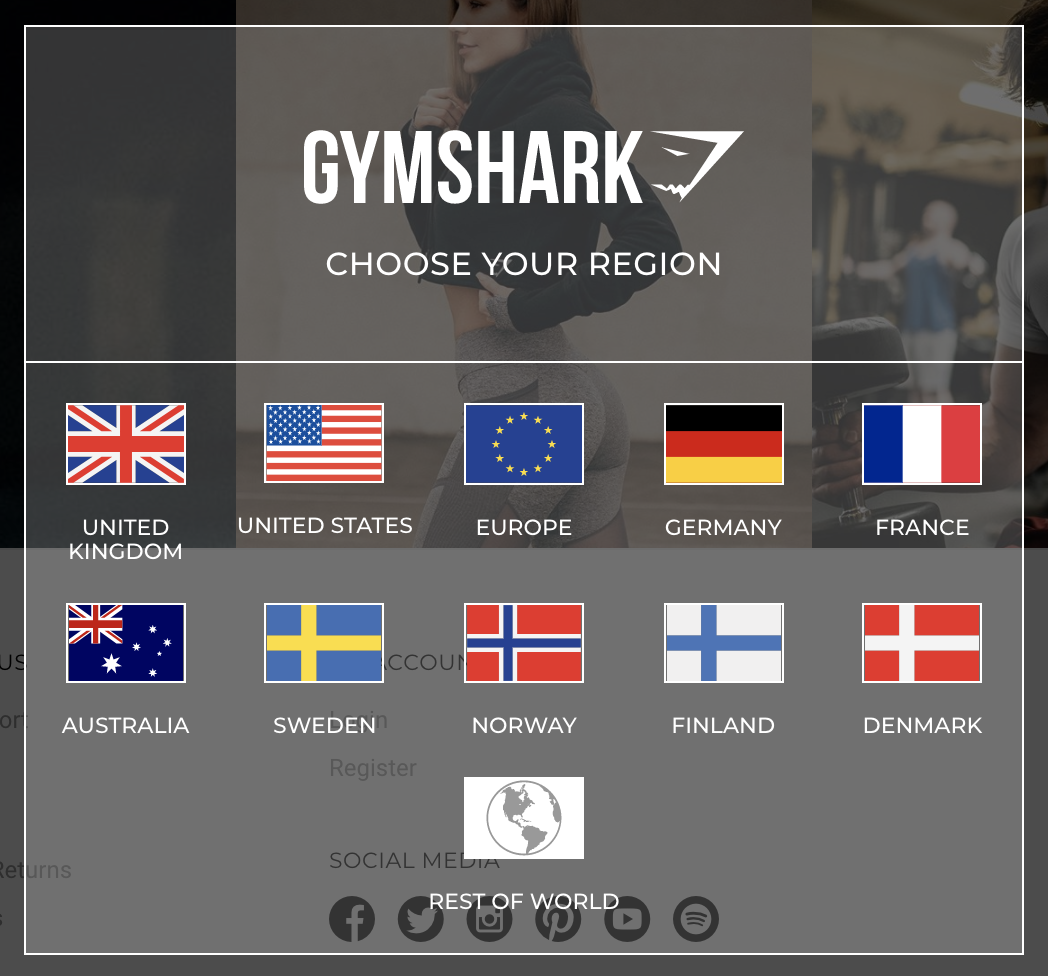How to duplicate a Shopify store?
- When should you duplicate your Shopify store?
- Create a test storeCreate multiple language storesOffer multiple currenciesCreate a wholesale storeHow do you duplicate a Shopify store?
- #1 - Duplicate a Shopify store manually#2 - Duplicate a Shopify store using third-party apps#3 - Duplicate a Shopify store by hiring a Shopify expertBenefits of duplicating a Shopify storeFAQs
- Will duplicating my Shopify store also copy my customer data and order history?
Duplicating a Shopify store can be an effective way to streamline the process of launching a new store with a similar setup or expanding your business to different markets. In this article, we will walk you through the steps required to duplicate your Shopify store, providing insight into why you might need to do it and the benefits it offers.
If you are in need of extra tips to help you manage your Shopify store better off, then this article is for you. Let’s get started!
When should you duplicate your Shopify store?
As mentioned above, before going deeper into the ways to duplicate your Shopify store, we will present some cases when you should consider copying your store. Duplicating a Shopify store is beneficial for established eCommerce companies who are about to develop themselves to international markets and build up a higher client experience. Also, it is for those who want to test code changes prior to delivering them to the live sites.
Here are 4 use cases for a Shopify store copy:
Create a test store
This use case is especially essential for the newbies in the eCommerce industry who are not dare to create things with the fear of negative consequences. If you are a Shopify developer who often breaks things, you should duplicate your store into a test store. This test store will be the place for you to get creative freely and test themes as well as code changes. What is more, you will have an ideal environment where you can play around without being scared of the risk of consequences affecting your main store negatively.
Duplicate your Shopify store into a test store where you can get free changes without negative consequences Let’s duplicate all parts of the data of stores, pages, arrangements, and more into your sandbox test store, which is also known as a staging environment.
Create multiple language stores
When you want to bring your brand to the new level of the international market, you should take into account the languages used in selling products. The latest research has shown 20% of the world’s total population, as well as 1.5 billion people, use English and speak some level of it as one of their languages. Meanwhile, the rest of nearly 6 billion people around the world do not know any about English. When your store sells products using just English, you will probably miss many potential buyers just because they can not understand the language you serve.
However, don’t worry since you can duplicate your Shopify store into a second one. Then, you will translate the content on your own without changing any of the overall design consistent. You can also hire someone (friends, translators, etc.) to translate for you if you are not good at languages.
You can duplicate your Shopify store and do the translating to offer multiple languages and serve international buyers Offer multiple currencies
Like the language use case, when you just serve customers with one currency only, you might lose a large number of potential buyers. Therefore, you should duplicate your Shopify store to build up localization, which is perfect for enhancing your customer experience.
By offering multiple currencies, you will make it easier for customers worldwide and some specific places where there are more potential buyers to purchase from your store. When you display the local currency, your buyers will know how much they have to pay without checking the conversion rate manually. Moreover, you can prevent any fluctuations in exchange rates and set the price at a straight conversion.
For example, you can duplicate your store into two or more ones of your brands in which you have one store offered for US customers, one for EU customers, one for Asian customers, etc. Gymshark is a typical seller who has got extremely localized and widened his stores around the world with more than 10 regional stores.
Gymshark has got extremely localized with many regional stores around the globe Create a wholesale store
Duplicating your Shopify store to create a wholesale store is such a great idea if you are about to develop your brand and expand your product lines. It is extremely beneficial for those who have unique products or services because wholesale will be a huge profitable avenue for their companies.
This use case is to improve your customer experience with your brand since when they are allowed to order online, they will look up at how good you and your companies are in managing wholesale orders. This is suitable whenever you have never tried any wholesale orders or have already taken an important part. Also, to control and identify who is checking your wholesale prices and offers, you can make a password to protect your store.
How do you duplicate a Shopify store?
Before you try to duplicate a Shopify store, ensure that your new shop is on the same Shopify price plan as your previous online store. This is a Shopify policy released to ensure that a lower-tier store cannot use the additional capabilities available to higher Shopify membership tiers.
There are three main methods for helping you with how to duplicate the Shopify store. Let’s walk through each method in detail and choose the one that is optimized for you.
#1 – Duplicate a Shopify store manually
Note: To clone Shopify store you want for free, just export the data from your original store as CSV files and import it into the Shopify duplicate store. However, while utilizing the manual procedure, you can only import Customers and Products into your replicated business.
Now, let’s view the store duplication process manually:
Step 1: Configure Basic Setups
First, select the same Shopify theme for your replica store and customize it to your liking, as Shopify themes cannot be exported or imported. Your store’s main settings, such as taxes, shipping, payments, and checkout, cannot be cloned after that.
Step 2: Export the CSV files from the original store
Log into your original Shopify store and export your customer and product information.
- On the Shopify dashboard, choose the Customers or Products tab.
- Press the Export icon.
- Select All Products or All Customers.
- Click Export Products or Exports Customers.
After that, check your email to get the exported CSV files.
Note: If you delete items or their photographs from your previous shop after exporting them, you will be unable to import those products to your new store until you change their image URLs.
Step 3: Import data into the duplicate storage
To transfer product and customer data from your exported CSV files to your cloned Shopify store, just follow the steps outlined below:
- Select the Customers or Products tab.
- Press the Import icon.
- Click Add File to choose the CSV file you just downloaded.
- Not required: After that, you may choose how your importing should be set.
- To finish, click Import Customers or Import Items.
This is the manual technique of cloning a Shopify store. If you’re a beginner who only wants to copy customer and product data in your new firm, the manual technique may be ideal for you.
However, you should understand how to automatically duplicate your Shopify store for a complete store transfer; we’ll guide you through it next.
#2 – Duplicate a Shopify store using third-party apps
Besides the manual method, you can rely on third-party apps to help you duplicate your online stores. Here, we will demonstrate how to duplicate your Shopify store using Duplify app.
Duplify is a store-duplication app that streamlines shop cloning process by automatically and bulk exporting vital features such as goods, variations, media, metafields, inventory, collections, pages, files, blogs, customers, orders, and redirects to a new store without the need for technical knowledge.
Step 1: Install Duplify to duplicate your store
Go to the Shopify App Store and search for Duplify ‑ Duplicate Your Store
Important: Make sure that the app is installed on both the stores you want to duplicate and to be duplicated. In this part, I’ll set the store copied store as Duplicate Store, whereas in the original, you need to copy data as My Store.
Now, you can click the Install button, then you will be forwarded to the Shopify Dashboard, then hit Install again to complete the installation.
Step 2: Proceed to duplicate
Once installation is complete, open Duplicate Store, you will see the Duplify app tab, click there and then choose the second category like the image below. After that, you need to copy the code from the duplicate store.
Then open another tab, switch to My Store, and open the Duplify tab. This time, you can choose Start Export.
Copy Shopify store’s code from the Duplicate Store and then enter the email address to receive a notification. Once finished, choose Start Demo to see a preview or Start a full export to get the final result. Then, let the app handle it. The time required to duplicate is dependent on the complexity of your store.
#3 – Duplicate a Shopify store by hiring a Shopify expert
Duplicating a Shopify store by hiring a Shopify expert is a great approach if you need a customized solution or if the process feels too complex to handle on your own. It’s crucial to notice some of these points when choosing a Shopify expert to help you with the store duplication task:
- Experience and Specialization: Ensure the expert has experience with Shopify store duplication, especially if you have unique requirements like custom apps or integrations.
- Client Reviews and Testimonials: Check reviews or ask for references to gauge the quality of their previous work.
- Communication Skills: A good expert should be able to explain the process clearly and keep you updated on progress.
Benefits of duplicating a Shopify store
Duplicating a Shopify store can be quite advantageous for various reasons. Here are some of the benefits:
- Test Store Development: Duplicating your store lets you quickly create a test environment to experiment with changes and new features without impacting your live store.
- Targeting Different Countries: Cloning your store simplifies reaching international customers by allowing easy customization for each country.
- Wholesale Store Creation: Duplicate your store to efficiently set up a wholesale version, catering to bulk buyers and expanding your market.
- Code Testing and Customization: For eCommerce businesses, duplicating a store helps safely test code changes before applying them to the main site.
Note:
When duplicating a Shopify store, it’s important to remember that certain data like apps and third-party integrations, may not transfer seamlessly, which can affect your store’s functionality. In my experience, I had to manually reinstall apps and set up payment gateways again.
Experts also recommend reviewing theme customizations, as not all elements will copy over perfectly, which means you’ll need to double-check each page to ensure your duplicated store looks and works as intended.
FAQs
Will duplicating my Shopify store also copy my customer data and order history?
Yes, the duplication process typically includes customer data and order history, allowing you to retain valuable information for analysis or customer service purposes. However, sensitive data like credit card details will not be copied due to security reasons.
Can I duplicate a Shopify store and transfer it to a different Shopify account?
No, store duplication is primarily for creating a copy store within the same Shopify account. To transfer a store to another account, you would need to contact Shopify support for assistance.
I’ve made several customizations to my theme. Will these customizations be included in the duplicated store?
Yes, the duplicated store will include all your theme customizations and settings, ensuring a consistent look and feel between the original and copied stores.
Are there any limitations on what can be duplicated in a Shopify store?
While most store data can be duplicated, certain elements might not be copied, such as third-party app configurations or specific settings related to payment gateways or domains. You might need to reconfigure these elements in the duplicated store.
I’m seeing some errors or unexpected behavior in my duplicated Shopify store. What should I do?
Carefully review the documentation or support resources provided by the duplication app or method you used. If the issue persists, consider contacting Shopify support for assistance.
Final words
Duplicating a Shopify store can help expand your business, target new markets, or test changes without affecting the original store. This guide covered key steps like exporting data, copying themes, and transferring settings. For a smoother experience, consider using third-party tools and always test the new store thoroughly before launching. Keeping your content unique and compliant with regulations will ensure a successful duplication.
Sam Nguyen is the CEO and founder of Avada Commerce, an e-commerce solution provider headquartered in Singapore. He is an expert on the Shopify e-commerce platform for online stores and retail point-of-sale systems. Sam loves talking about e-commerce and he aims to help over a million online businesses grow and thrive.Related Post
-












